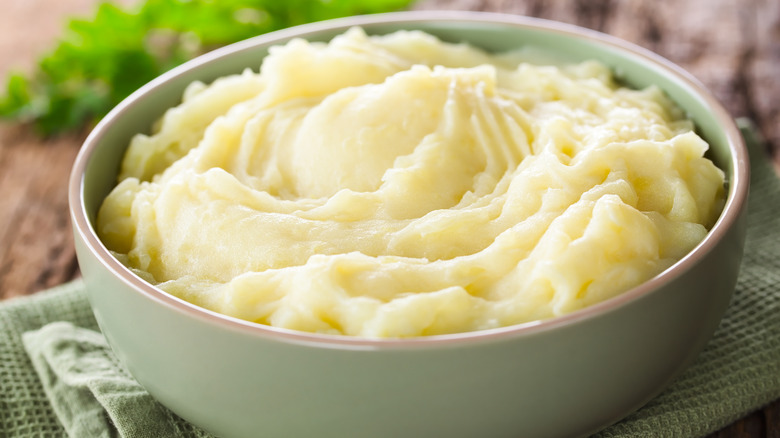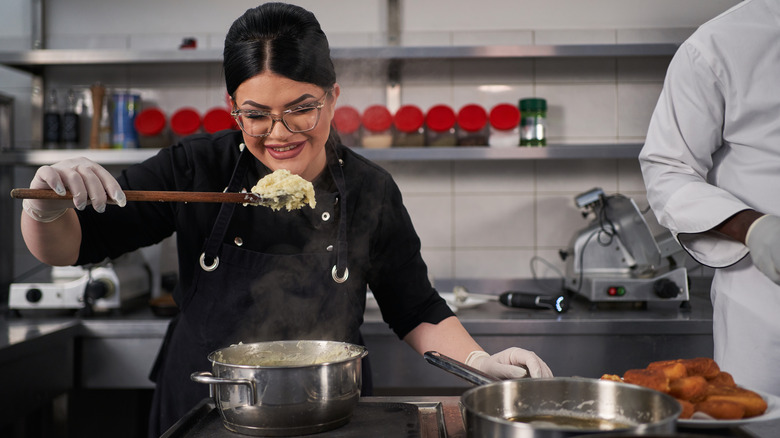Think Twice Before Reheating Mashed Potatoes From Frozen
Thick, fluffy, and buttery are ideal qualities in mashed potatoes. But watery? Not so much. And yet, that's exactly the texture you may end up with if you reheat yours right after they've been in the freezer. If you throw them immediately on the stove or in the oven, you'll get warm mashed spuds that have retained their original taste. However, they may be a little thin or runny, and lack the cloud-like consistency you remember.
Why does this happen? Potatoes are porous, so they soak water in easily during cooking when their starch molecules begin to break down. And when you freeze them, all that absorbed water turns into ice crystals – which melt once they get tossed into the oven or slow cooker. To counteract some of this, try thawing your mashed spuds in the fridge overnight before heating them up. It takes an extra step and a little added patience, but you'll be rewarded with a creamy version reminiscent of the dish you started with, and your potatoes will warm up more evenly than if they were heated straight from frozen.
How to reheat frozen mashed potatoes
If you thaw your mashed potatoes in the fridge overnight and they're still slightly icy when you reheat them, there are a few quick fixes you can turn to. The easiest (and yummiest) is to simply add in a thick, creamy ingredient like butter, sour cream, or cream cheese — just make sure it's lukewarm so it doesn't cool down your mash. If you're reheating mashed potatoes on the stove, make sure to stir often so the dairy additions don't burn, and if you're warming up in the microwave, try nuking the potatoes on half power. Their texture may be a little thicker than the light, airy spuds you started with, but they should still taste decadent and delicious. If the consistency is still not up to your standards, you can let an extra pat of butter melt in after you've reheated everything. And to get some of the original flavor back, sprinkle in some fresh herbs or seasonings like salt and pepper.
Creating creamy frozen leftovers starts right from the first step — choosing your spuds. Some waxy varieties, like Yukon Golds and fingerling potatoes, freeze better than others because they have less starch, which can turn grainy once reheated. Then once you've picked the perfect potatoes, make sure to go the extra mile and thaw them in the fridge before warming up.

